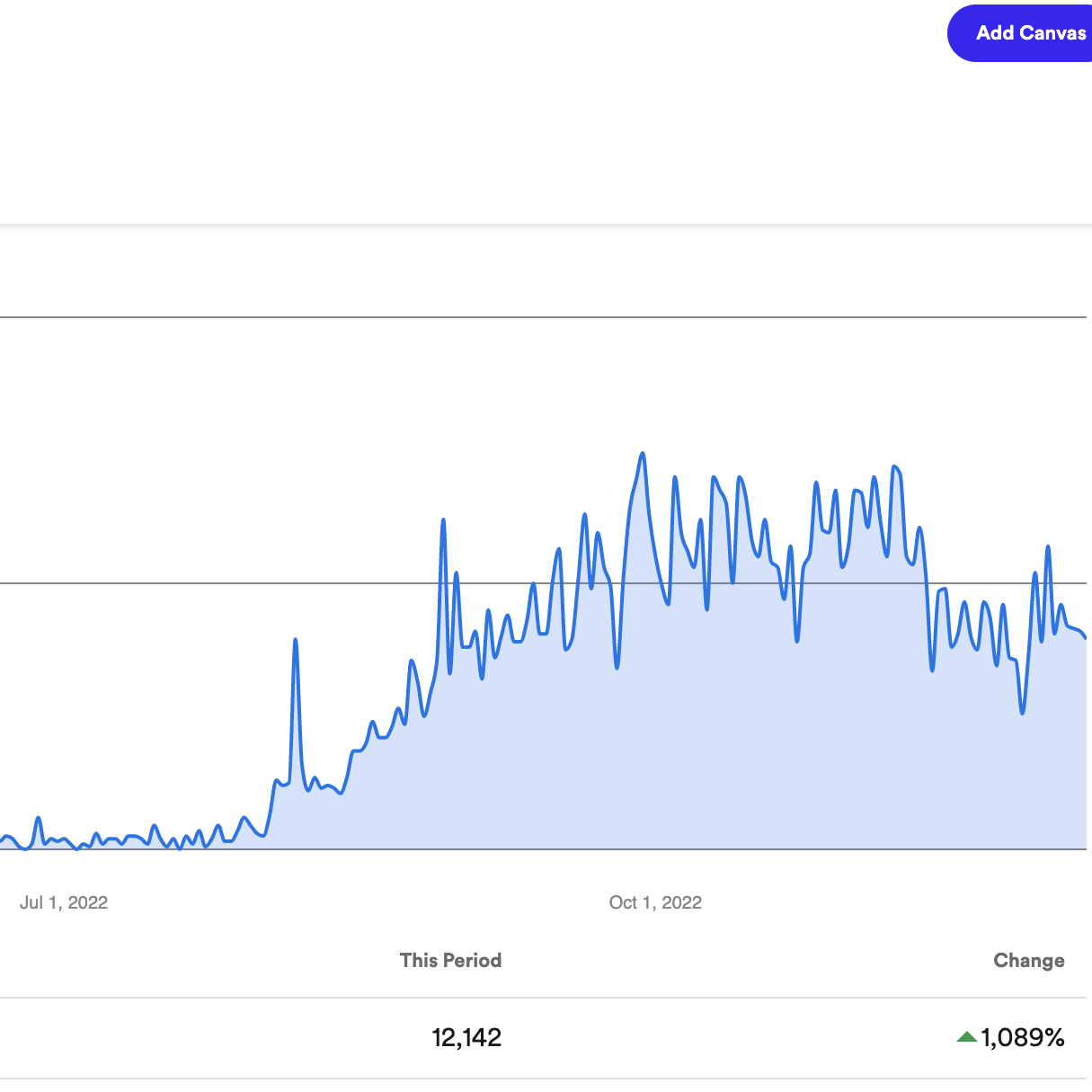The short answer to the question in the title is, yes, Facebook ads definitely can work for Spotify promotion.
If you’re looking for a more detailed answer – complete with pros, cons, and analysis, well, buckle up. I’m going to break down my own results from implementing the ads-based approach I teach in my Spotify promo course (the One-Two Punch for Spotify Growth).
I’m 4 months into implementing the approach for my own music… and let’s just say things have been more fun than I thought they’d be. Whether you get the course or not, I think this’ll be helpful if you’re considering running ads for your music.
This is what happened (warts and all).

⬆️ That’s a playlist I created to include every song in my catalogue.
Just over four months ago, it didn’t exist. Today, thanks to the promotion I outlined in the course, it’s just crossed the 1,000-followers mark.
It’s been pretty cool to see.
I set up the campaign while filming the course, and I actually planned to turn off the ads after I was done. But I got kind of hooked on the high of people finding my music, and I just couldn’t bring myself to turn them off.
Thanks to my lack of willpower, here’s what the streaming numbers have looked like:
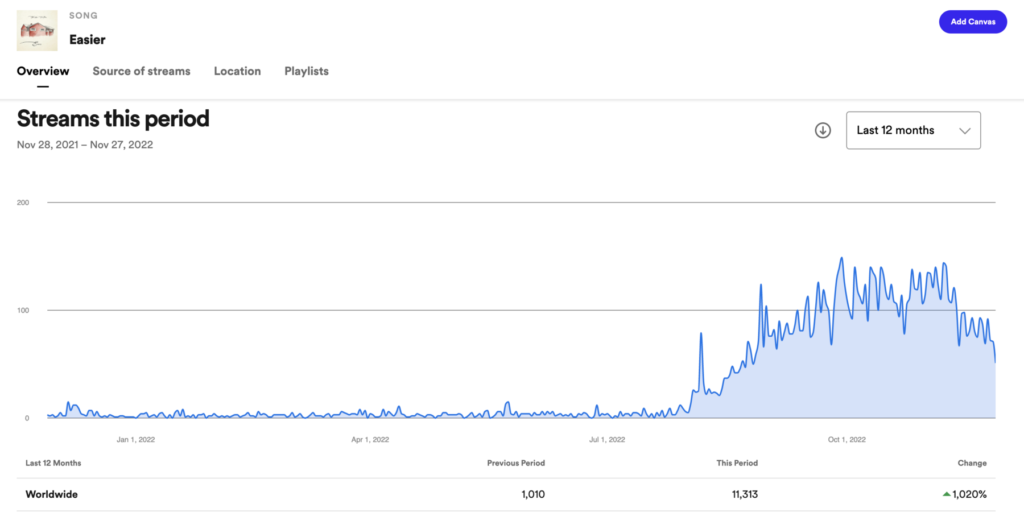
To start, I was promoting “Easier,” a song that I’d released about three years prior. This past month, I switched the campaign to my newest release
All told, we got around 11k streams for “Easier”; as you can see if you blow up the data, that’s up 1,020% over the previous 12 months.
But while “Easier” was the focus of the ads, it wasn’t the only song that got a boost from my marketing.
Here’s another song from my catalogue, which I wasn’t directly promoting:
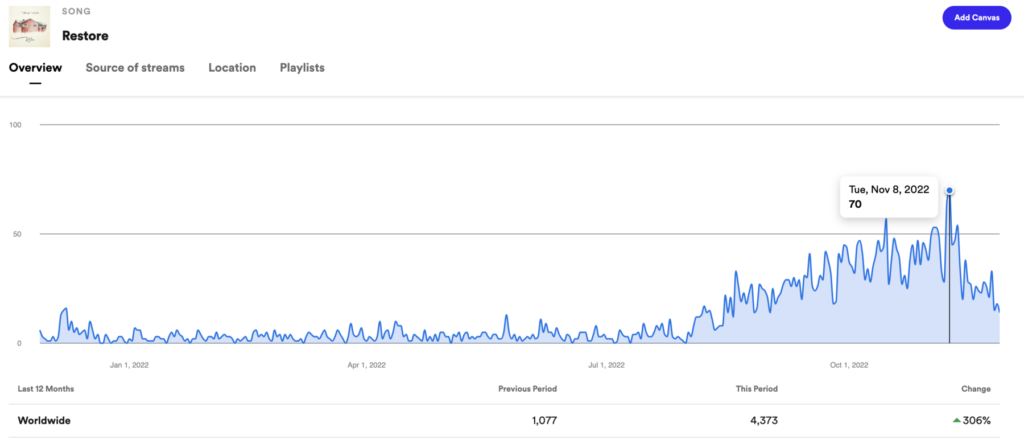
“Restore” was the third track on my playlist. Obviously, it didn’t see the same bump that “Easier” did, but it still saw significant gains.
That played out across the rest of my catalogue, too.
In fact, while I never explicitly asked people to follow me (and never even sent anyone directly to my Spotify profile), the One-Two-Punch campaign has been accumulating followers at my fastest-ever rate.
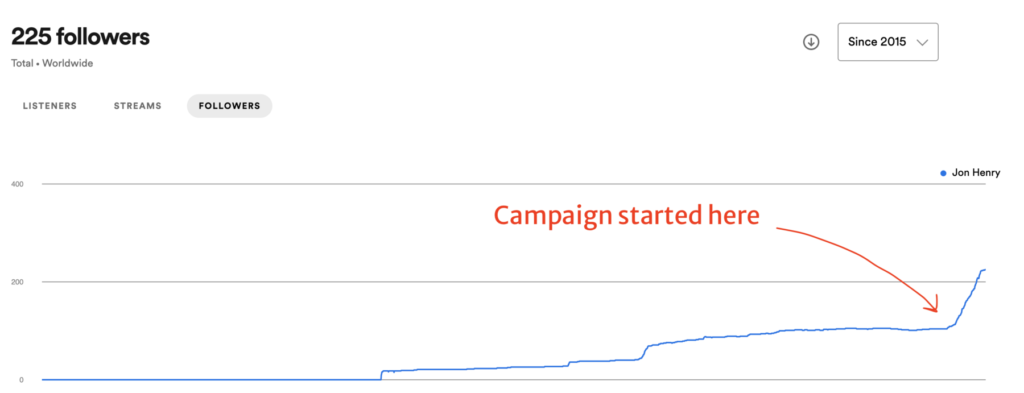
Best of all, the engagement from ads is insane, which leads to steady algorithmic growth as Spotify continues to show listeners the song.
To illustrate, here are the top playlists for “Easier” after three months of promotion:
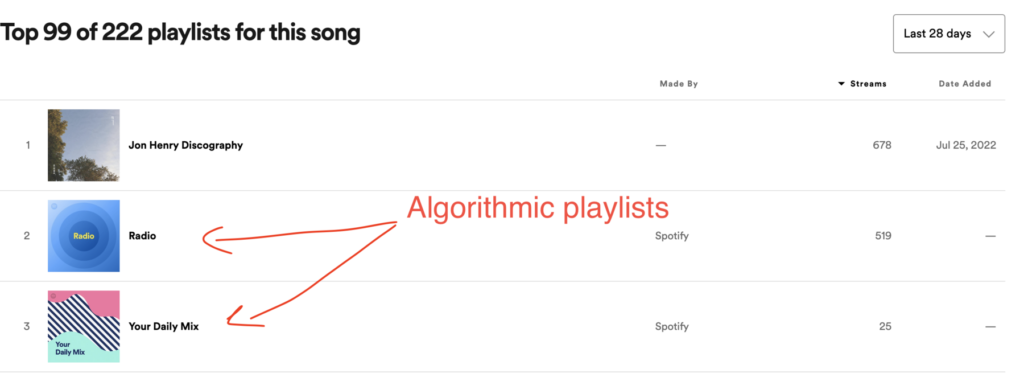
My own playlist (which I was sending listeners to) is at the top, but as you can see, the song is also getting love from Spotify’s Radio and Your Daily Mix lists.
Before I ran the campaign, the song was getting literally zero algorithmic love.
Again, for a mediocre* musician like me, it’s been pretty fun to watch.
The drawbacks of ads
At this point, I should probably transition right to the sales pitch: Want results like these (or better)? Get the course now!!”
But that’d be a little disingenuous.
I think it’s only fair to tell you that, while I’m excited enough about the results to keep the ads running indefinitely, there are also some legitimate reasons my approach might not work for you.
1. Facebook conversion ads are most effective in countries where English is not a first language – and especially in Brazil and Mexico.
Seriously, if you check out any of the big Facebook ads guys (my top three are Andrew Southworth, Tom Dupree III, and John Gold, for what it’s worth), you’ll see that Mexico and Brazil dominate their “top cities” sections.
Long-story-short, if you’re looking for cost-efficient streams in the US, you’ll probably have a tough time with the approach I walk through in the course.
(I’ve heard rumors that Tom Dupree is quite good at building traffic campaigns targeting the US, but I haven’t personally seen that approach work, yet, and I don’t cover it in the course.)
But if you’re okay with an international audience (or, even better, if you’re actively looking for a South American audience), then this stuff is perfect for you.
2. The playlist followers I’ve acquired aren’t quite as engaged as I’d hoped.
As I mentioned, I just released a new song (my first in three years!), and I was hoping that when I added it to my 1,000-follower-strong playlist, I’d be able to drive some serious streams to it.
The results have been… okay.
Over a little more than two weeks, the release has generated 532 streams.
That’s definitely more than it’d have gotten without inclusion on my playlist, but to be honest, I was hoping we’d be well over the 1,000-stream mark by now. (All it would’ve taken for that, after all, was each of my playlist followers streaming the track once.)
I’ve seen this repeated in campaigns I’ve run for my clients, too. The takeaway: While the playlist I’ll teach you to build will be an asset for you, it won’t be quite as valuable an asset as the follower counts might lead you to believe.
3. You’ve got to pay money to make ads work.
To this point, I’ve spent just short of $1,200; I’ve been running at a budget of $300 per month.
As a result, my playlist itself has generated just over 20,000 streams:

If you attribute Radio and Daily Mix plays to ads, too (which I think is probably fair), the total stream count for the campaign is close to 30,000.
That’s a significant number. But it didn’t come cheap.
If you don’t have $300 per month to spend, you’ll have a tough time finding success using ads.
Where playlists fit in
I’ve focused on using ads for my own music, because I’m busy and I just can’t justify continually spending time on playlist pitching my own stuff.
But I frequently run playlisting campaigns for my clients. And I’m convinced that the best way to get more streams on Spotify is to run ads and pitch playlists simultaneously.
Playlists balance out a lot of the drawbacks I’ve outlined above:
- They generate a higher volume of streams
- They offer different geographic targeting
- If you pitch yourself, playlisting can be basically free
That’s why, in the One-Two Punch, I teach playlist pitching in depth, too.
It takes time (and a thick skin), but it works.
And if you get some playlist traction going in tandem with a good ads campaign – look out, world.
Want to make it happen?
Whether you get the course or not, hopefully this breakdown of my own results is helpful for you. And if you do want to jump in yourself and start boosting your streams, well, I’m very confident my course will help.
As far as I know, it’s the only course on the market that covers playlists and ads in depth. You’ll literally get to watch me set up the exact campaign I just walked through, plus you’ll get detailed training on how to use playlists, too.
And, regardless of whether you use Facebook ads, playlists, or just pass on Spotify promo entirely – here’s wishing you good luck as you make and market your music.
You’ve got this.

